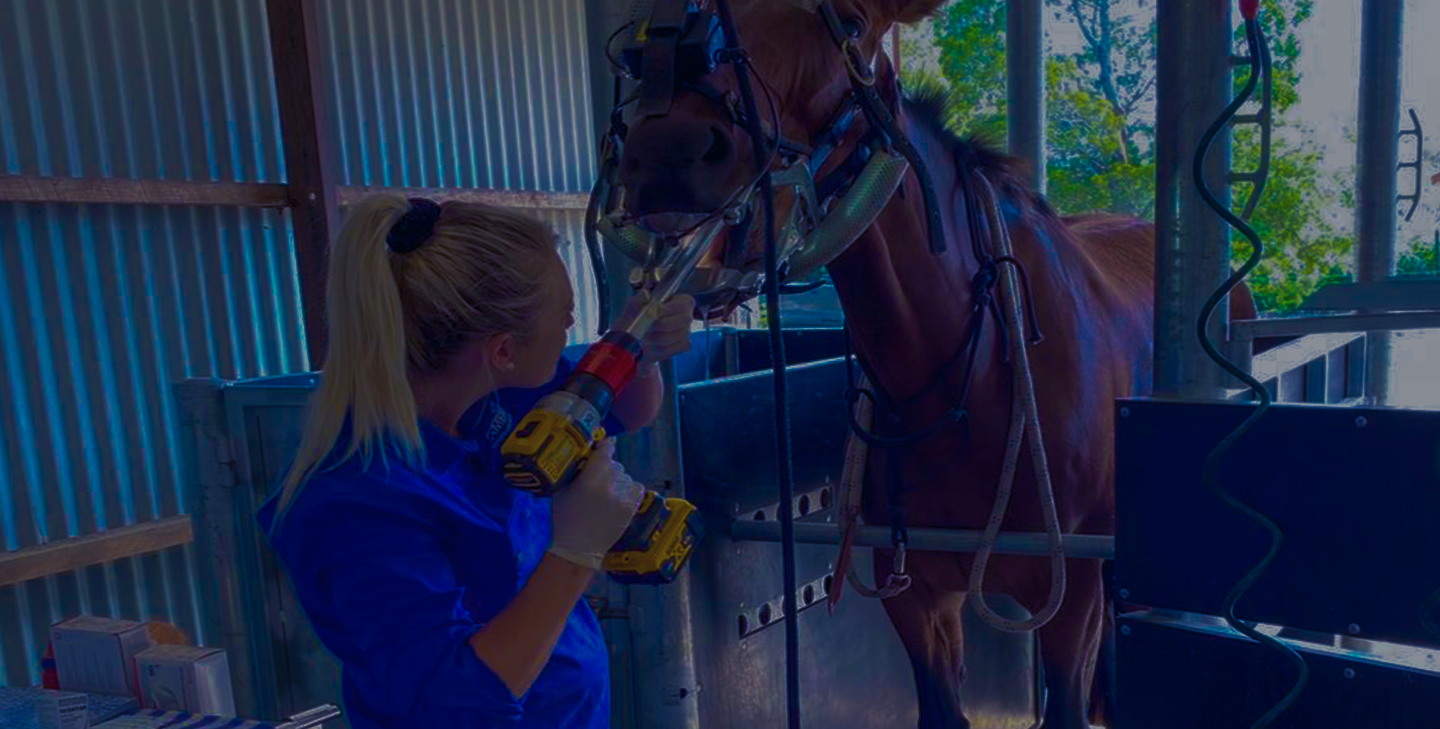Dentistry Overview
Why is equine dentistry so important, and what should you expect from your equine dental vet?
Well the old adage of just rasping the teeth is out the window and below are some of the things you should come to expect from your dental visit.
Sedation
How can we expect to diagnose dental conditions when the patient is moving (being a horse and all), and we simply cannot examine the mouth? A good dental examination includes sedation to allow for a good oral exam.
Clean Mouth
Once the patient is sedated, the mouth needs to be flushed and all feed material removed. This allows us to fully examine all aspects of the teeth and oral cavity.
Good Lighting & a Dental Mirror
Teeth arent just one dimensional a strong light and mirror & light are crucial to examining all aspects of the mouth - just a human dentist would.
Record Keeping
A good equine dental vet will always record what is going on, no different than all other medical records. Keeping good dental records is key for future interpretation, evaluation and treatment - by any dentist.

The equine mouth is crucial to everything that revolves around your horse, from riding issues and bit resistance, to weight loss and chronic ulcerative lesions causing ongoing dental pain and poor animal welfare and husbandry. Having a balanced mouth helps increased feed conversion efficiency and decrease feed wastage.
So obviously not absolutely everything is related to the mouth, but a large percentage of the problems that we see in horses are related to one simple husbandry practice - Dentistry. And something that is often easily overlooked, or over simplified. It is not quite right to simply call the proverbial "dentist" who throws a rasp down your horses through and says "shell be right mate!", and doesn't actually look at what they are doing.
The Key Is To LOOK!
Good dentistry starts from simply looking, and identify problems in your horses mouth. If you don't look how can you know?
What to look for
What to look for at home...
LONG STEM FIBRES
long stem fibres in faeces indicate they are not being broken down efficiently by the mouth.
WEIGHT LOSS
chronic weight loss despite increased feed intake.
HALITOSIS
bad breath, reluctance or slow to eat. All can indicate dental disease.
DROPPING FEED
inability to chew, excessive feed on the ground etc.
QUIDDING
packing, chewing, spitting, balling up of feed around the teeth.
BIT RESISTANCE
issues with the bit can be due to pain caused ulceration or bad teeth. Leading to riding issues.
Common Dental Issues
So what are some of the more common dental issues we see in our routine dental exams? Below is a list of some of the common dental abnormalities we routinely see, that could be causing your horse pain with every bite...
Sharp Enamel Points
Horses teeth continually erupt and wear throughout the animals life, often leading to sharp enamel point development and if left untreated can develop into major sources of mucosal pain and ulcerative lesions. These enamel points develop due to abnormal wear patterns, and will continue to develop as horses continue to erupt teeth throughout their life time meaning these will continue to develop over time. Removing these is the old fashioned grinding that everyone commonly associates equine dentistry with.
Periodontal Disease
The most common issue we see, especially in older horses, is periodontal disease. This is a condition where feed packing around a tooth (or multiple), leads to localised infection and ongoing tooth root and associated gum resorption. These horses commonly have abnormal wear patterns, leading to pocket formation which fills with feed stuff rotting over time leading to bad breath (halitosis) and ongoing dental pain and tooth decay.
Fractured Teeth
Fractures can occur for a variety of reasons, leading to exposed tooth roots and causing marked dental pain. Fractured teeth need to be removed if they have exposed the tooth roots as this will eventually lead to tooth loss and ongoing issues.
Wolf Teeth
Wolf teeth is the common name for a vestigial (remnant and unnecessary) tooth that sits in the same area as the bit causing dental pain, and riding issues. Hence these teeth are commonly removed at routine oral health examinations. These teeth are present at birth or soon after, and it is essential that they be removed prior to mouthing the patient otherwise they can potentially lead to life long bit resistance in the riding horse. We recommend a dental check prior to mouthing a breaker in order to asses if wolf teeth are present.
Displaced, Wave, Steps, Ramps, Parrot & More
Depending on the conformation of your horses mouth, we see a variety of conditions that alter the normal appearance and structure of your horses mouth. Ultimately this leads to decreased functionality and loss of chewing ability. Secondary clinical signs include feed packing, dropping feed, weight loss, long stem fibres present in the manure and much more.
In part to our earlier reference about the proverbial dentist, most lay equine dentists have not undertaken further training in equine dentistry (most, as some certainly have). In doing so they call themselves a dentist in order to attract clients when in fact it is simply a marketing tool, but how does that relate to us?
Well here at CVS we strive to continue to develop our understanding of the equine mouth. Dr Lachie, has not only taken on further equine dental training through core equine veterinary training, but will continue to do so into the future. In order to provide the highest quality of veterinary equine dentistry to you and your beloved pet or performance athlete.

